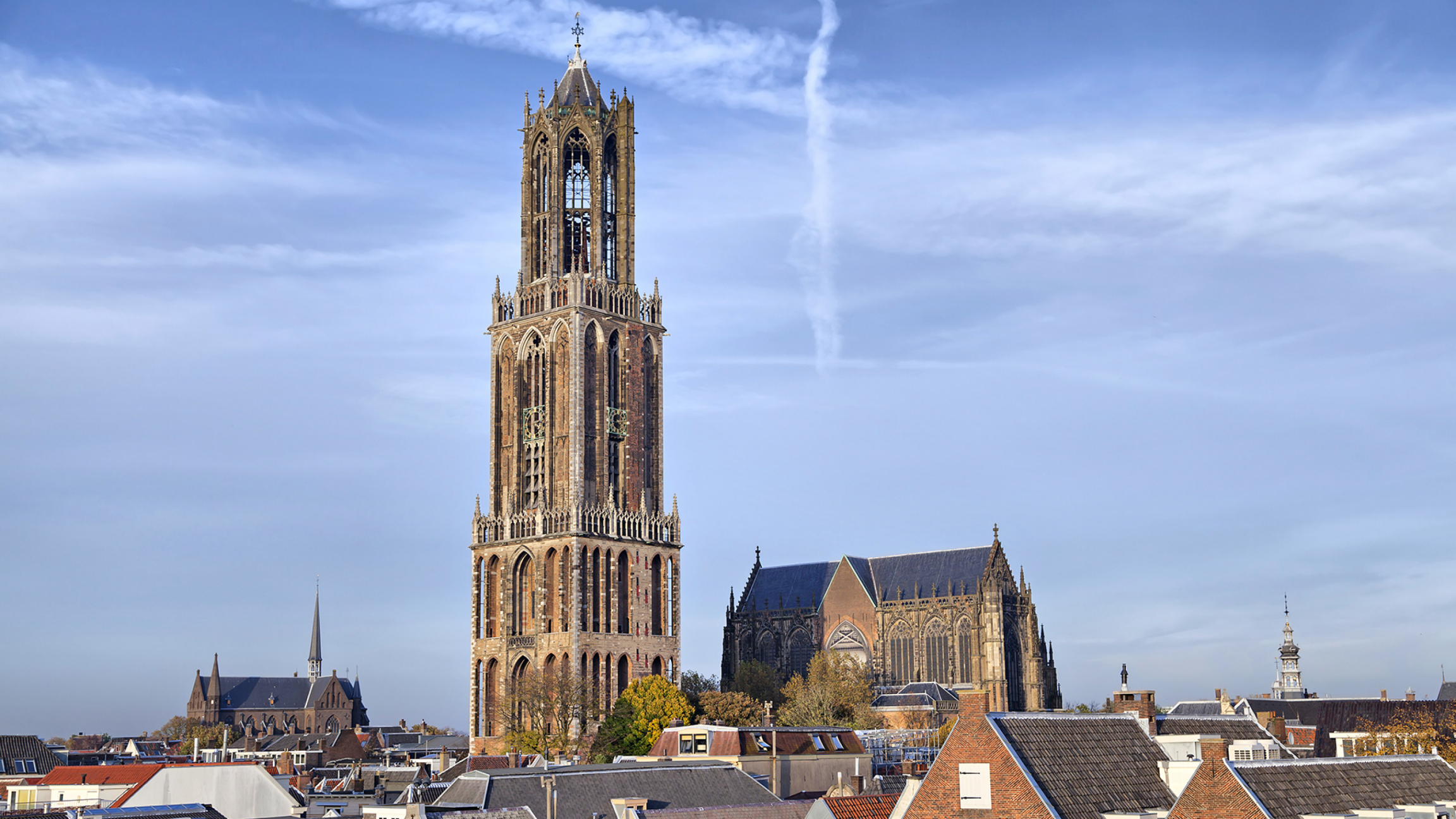

The Well-Tempered Clavier II No. 7 in E-flat major
BWV 876 performed by Christine Schornsheim
at the Dom Church in Utrecht
Behind the music
Sounds like…
Bach captures the sounds of organ and lute
This prelude ripples elegantly through the mighty Dom Church, which forms the backdrop for one of Bach’s more delicate works. There can be no doubt that the composer intended it for the harpsichord. The sources even show: specifically for the Clavier. Furtively, however, Bach pretends he is writing it for the lute. This type of work, where one instrument imitates another, was one of his trademarks – see also the fugue, which strongly resembles the organ, an instrument on which Bach excelled himself, of course.
We know that Bach had close contact with Sylvius Leopold Weiss and other famous lute players. We also know he had two ‘Lautenwerke’ at home: a hybrid keyboard instrument whose strings are plucked like a lute. He had one of them built to his own specifications in 1740 by Zacharias Hildebrandt. Did this prelude originate as an improvisation on such an instrument, and later develop into the brilliant little work we hear today?
As we said, this fugue would also sound good on the organ. That may explain its comeback from Bach’s archives to shine alongside the quasi-lute work. The long theme with some striking leaps is given a strict stile antico treatment – exactly as though the composer wanted to prove that there was still a future for this venerable Renaissance-rooted style, which fascinated him so much in his latter years. In contrast to the jovial prelude, Bach weaves together the fugue parts in austere fashion. It is only halfway through that he takes a break from the thematic material, with runs in the bass. Finally, the soprano and bass enter into dialogue once again, before the whole piece makes a smooth landing.
WTC II
Bachs eerste boek met Preludes en fuga’s in alle toonsoorten namen we op bij 24 verschillende spelers thuis. Voor dit tweede deel, geheel uitgevoerd door Christine Schornsheim, kozen we 12 heel verschillende Utrechtse locaties, om de 900ste verjaardag van onze thuisstad te vieren.
Das Wohltemperirte Clavier, BWV 846-893
48 klavierstukken in alle 24 toonsoorten: dat was het soort uitdaging waar Bach van genoot. In elk van de twee delen van het Wohltemperirte Clavier bracht hij 24 keer het muzikale koppel prelude en fuga samen, twaalf in mineur, twaalf in majeur. In de preludes liet hij zijn fantasie de vrije loop, om in de fuga’s zijn mathematische hoogstandjes te verrichten. In tegenstelling tot de ijzeren discipline waarmee Bach zich voor zijn kerkelijke composities moest inzetten, kon hij zich hier overgeven aan intellectuele Spielerei zonder klemmende deadlines.
Het eerste deel van het Wohltemperirte Clavier stamt uit 1722, maar bevat muziek die deels al in de vijf jaar daarvoor werd geschreven. De ontstaansgeschiedenis van deel twee is minder helder: pas rond 1740 stelde hij dit tweede manuscript samen, maar opnieuw dateert een deel van de erin opgenomen preludes en fuga’s uit een veel eerdere periode. De doelgroep van deze verzameling stukken omschreef Bach zelf als volgt: ‘Zum Nutzen und Gebrauch der Lehr-begierigen Musicalischen Jugend, als auch dere in diesem studio schon habil seyenden besonderem ZeitVertreib.’ (‘Zowel ter lering van de ijverige muzikale jeugd als ter vermaak van de in deze materie al onderlegden.’)
- BWV
- 876
- Title
- Prelude en fugue in E flat major
- Epithet
- no. 7 from the Well-Tempered Clavier II
- Instrument
- harpsichord
- Genre
- harpsichord works
- Serie
- Das Wohltemperirte Clavier II
- Year
- 1739-1740
- City
- Leipzig
Extra videos
Vocal texts
Original
Translation
Credits
-
- Release date
- 29 November 2022
-
- Recording date
- 15 March 2022
-
- Location
- Dom Church Utrecht
-
- Harpsichordist
- Christine Schornsheim
-
- Harpsichord
- Bruce Kennedy, 1989 after Michael Mietke
-
- Director, camera and lights
- Gijs Besseling
-
- Music recording
- Guido Tichelman, Pim van der Lee
-
- Music edit and mix
- Guido Tichelman
-
- Camera, lights
- Danny Noordanus
-
- Camera assistant
- Abba Miltenburg
-
- Data handling
- Stefan Ebels
-
- Assistant music recording
- Marloes Biermans
-
- Producer
- Josine Olgers, Marieke de Blaay
Discover
Help us to complete All of Bach
There are still many recordings to be made before the whole of Bach’s oeuvre is online. And we can’t complete the task without the financial support of our patrons. Please help us to complete the musical heritage of Bach, by supporting us with a donation!

